Smart Strategies to Reduce Waxing Pain Effectively


Intro
Waxing can feel like a necessary evil for those who prioritize smooth skin in their grooming routines. Yet, for many, the experience can be akin to trying to tame a wild beast—the fear and anticipation often surpass the benefits one might expect afterward. Knowledge of effective approaches for minimizing discomfort could pave the way for a more pleasant experience, transforming the daunting dread into an acceptance.
Understanding the underlying reasons for waxing pain can help in navigating through the process. The skin's sensitivity, the type of wax used, and the techniques applied all play crucial roles in how one perceives discomfort during this beauty endeavor. Therefore, this article delves into effective methods to mitigate that uncomfortable sting, aiming to equip readers with actionable insights that can enhance their next waxing session.
The discussion will not only cover preparation techniques but also emphasize post-wax care routines. Such practices offer solace to anyone who finds themselves at odds with their beauty treatments. Rather than viewing waxing as an ordeal, one can cultivate a mindset of confidence with the right knowledge.
Whether you're a seasoned pro or embarking on your first waxing journey, knowing how to ease discomfort can greatly enrich the experience. Let’s kick things off with some insights into key trends that can directly influence how we approach waxing.
Understanding Waxing Pain
Waxing is often necessary for many individuals as part of their personal grooming routine. However, the discomfort associated with waxing can create a daunting atmosphere for many. Understanding the reasons behind waxing pain helps in finding effective solutions to minimize it. Through knowledge, individuals can approach their waxing sessions ready and reassured, rather than filled with apprehension.
When it comes to the discomfort of waxing, it's crucial to know that pain is subjective. What may seem unbearable for one person could be merely a mild inconvenience to another. Factors influencing this discomfort include skin type, hair thickness, and sensitivity of specific areas. This understanding can lead one to make adjustments tailored to their own unique situation, potentially transforming an uncomfortable experience into a more bearable one.
The Science of Waxing
Waxing involves applying a heated substance to the skin and then quickly removing it, pulling hair along with it. This process can trigger pain receptors in the skin, resulting in that sudden sting. The hair follicle’s nerve endings are highly sensitive, and when the wax is pulled off, it stimulates these nerves intensely. However, the body has a way of counteracting this pain. The release of endorphins can provide some relief after the initial ouch.
Moreover, the temperature of the wax plays a significant role in the comfort level during the process. Ideally, it should be warm enough to adhere well but not so hot that it burns the skin. Finding the right balance is essential, as improper temperatures can exacerbate discomfort and lead to negative experiences.
Common Areas of Sensitivity
Certain areas of the body are more sensitive to waxing than others, often due to a higher concentration of nerve endings. Here are some key points to consider:
- Bikini Area: Known for its heightened sensitivity, the bikini area can be particularly painful for many, making it vital to adopt special precautions.
- Underarms: The skin here is thin, which can amplify sensations. Taking steps to prepare the skin can make a difference.
- Face: Especially the areas around the lips and eyebrows. These regions are not only sensitive but also have a direct impact on appearance, increasing the stakes of comfort during the procedure.
In essence, familiarizing oneself with how and why waxing causes pain—and identifying which parts of the body are usually more sensitive—allows individuals to better prepare for what lies ahead. By acknowledging these elements, one can implement strategies to lessen pain, fostering a more pleasant waxing experience.
"Knowledge is power when it comes to minimizing wax discomfort. Understanding the science behind waxing can offer peace of mind and help tailor strategies for each individual’s unique needs."
While the sting associated with waxing may never fully disappear, taking proactive steps can certainly transform the experience into a more tolerable one.
Pre-Wax Preparation Strategies
Preparing for a waxing session might feel like just another step in your beauty routine, but it plays a crucial role in how painful the process will be. Everyone's skin reacts differently, and knowing the proper strategies can smoothen the experience quite a bit. Ensuring your skin is ready for waxing means you can reduce both discomfort and irritation. That’s something we can all appreciate!
Skin Hydration Techniques
Hydration is key when it comes to minimizing discomfort during waxing. Dry skin can lead to increased sensitivity and a greater likelihood of irritation. So, the first thing to consider before your appointment is how well you hydrate your skin.
- Drink Plenty of Water: Staying hydrated from the inside out is of utmost importance. It increases skin elasticity and can help alleviate some pain when the wax is applied. Think of it as giving your body the juice it needs to perform at its best.
- Moisturizers: A week before your appointment, start applying a good moisturizer. Focus on areas that will be waxed. Look for lotions containing hyaluronic acid or glycerin, as they attract and hold moisture in the skin. Remember, though, don’t apply moisturizer on the day of waxing as it can interfere with the wax’s grip.
- Essential Oils: These can be beneficial, too. Lavender or chamomile oils are gentle and can help soothe the skin. Mix a few drops with your daily moisturizer and nourish your skin prior to the big day.
Exfoliation Practices
Exfoliating the skin effectively reduces the chance of ingrown hairs and prepares the skin for a smoother waxing experience. It’s like giving your skin a little polish before the wax hits.
- Weekly Exfoliation: Aim to exfoliate your skin about 3 days before your appointment. A gentle scrub or an exfoliating glove works wonders to remove dead skin cells without causing irritation.
- Chemical Exfoliants: Try a mild alpha-hydroxy acid (AHA) or beta-hydroxy acid (BHA) solution two days prior. These help dissolve the bonds between dead skin cells, making it easier for the wax to grab hold of the hair, thus reducing pain.
"A little extra care before waxing can make a world of difference in your comfort level."
- Avoid Sun Exposure: Stay clear of sunbathing or tanning for at least a week before waxing, as this can cause your skin to become more sensitive.
Timing Your Wax Appointment
Picking the right time for your appointment is more than just getting it on your busy calendar. Timing can affect your comfort level significantly.
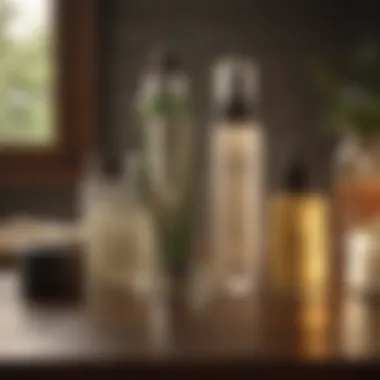
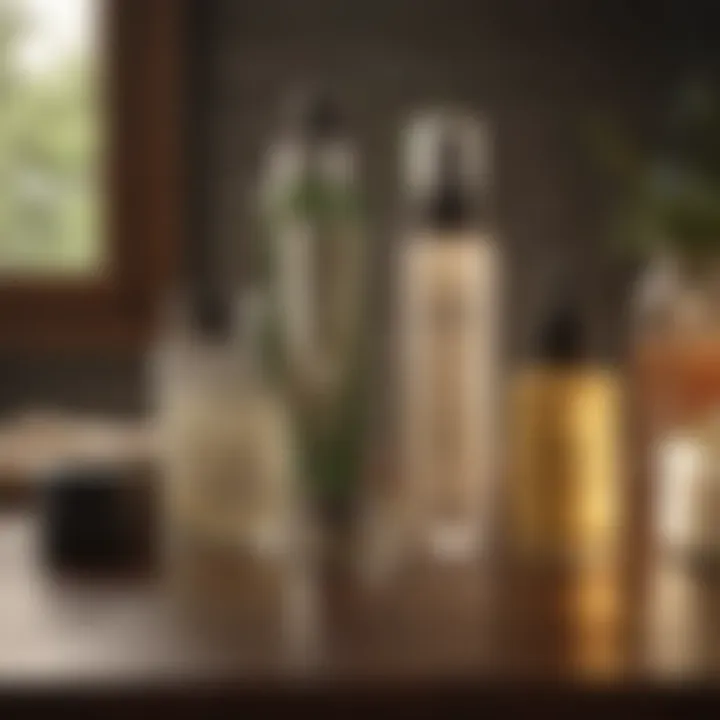
- Avoid Hormonal Moments: Consider your menstrual cycle. Many women noticed heightened sensitivity just before or during their period. Scheduling your waxing session for a few days post-period may save you from unnecessary discomfort.
- Choose a Convenient Time of Day: Mornings might be preferable for some, as the skin tends to be less irritable, while evenings may also work for those who can focus on relaxation afterward. Decide what fits your rhythm best.
In summary, taking a little time to prepare your skin can yield a more pleasant waxing experience. It’s like carving a smooth path before the inevitable moment of pulling. Think ahead and your skin will thank you for it.
Choosing the Right Wax Product
Selecting the appropriate wax for your skin can play a pivotal role in easing the discomfort associated with hair removal. Understanding the different types of wax and their unique properties can help you tailor your waxing experience to be less painful and more effective. Factors such as skin type, hair thickness, and sensitivity should guide your choice, enabling you to approach waxing with a renewed sense of comfort and confidence.
Types of Wax Available
Soft Wax vs. Hard Wax
Soft wax is a popular choice for many due to its ability to grab fine and short hairs, making it a go-to for areas like the legs and arms. This wax is applied thinly and removed using a cloth or paper strip, providing a quick and efficient waxing option. It adheres not only to the hair but also to the skin, which can lead to some additional discomfort during removal.
On the other hand, hard wax is a more gentle alternative, especially recommended for sensitive areas such as the bikini line or underarms. It is applied thickly and allowed to harden, creating a sort of shell that you can pull away without needing any strips. This method minimizes skin adhesion, potentially reducing pain during the waxing process. The key characteristic that sets hard wax apart is the way it works; it tends to grip hair more than skin itself, which is why many find it less painful overall.
In summary, when weighing the benefits, soft wax may be beneficial for quicker sessions but could be more painful. Hard wax offers a more comfortable experience, making it well-suited for sensitive areas.
Natural Wax Options
Natural wax products are emerging as a favorable choice in the waxing world. They often feature ingredients like beeswax or plant-based elements, appealing to those seeking eco-friendly alternatives. The key characteristic of natural wax is its gentler formulation, which can be less irritating for sensitive skin types. This makes it especially appealing for people who are prone to reactions from synthetic ingredients.
The unique feature of natural wax options is that they often include nourishing additives like essential oils, which can soothe the skin, thus enhancing the post-wax recovery experience. While these options may sometimes lack the strong grip of synthetic waxes—making them less ideal for coarse hair—they provide a balanced approach for those prioritizing skin health and environmental concerns.
Choosing between soft wax, hard wax, and natural options depends largely on individual needs and sensitivities. It's essential to test and see how your skin reacts to each type, potentially leading to a more comfortable waxing experience.
Temperature Considerations
The temperature of the wax plays a crucial role in your waxing experience. Applying wax that is too hot can lead to burns, while wax that is too cool may not adhere well to the hair. Ideally, the wax should feel warm and pleasant against the skin, allowing it to spread evenly and effectively.
Always test the wax temperature on a small area before applying it to ensure it feels just right.
When considering temperature, ensure that your aesthetician understands the need for proper heating. Different products may require different heating methods, such as microwave or pot heating, and both have their benefits and risks. Always aim for a manageable temperature that promotes comfort without compromising safety during the waxing session.
Pain-Relief Techniques
In the world of personal grooming, waxing stands as a double-edged sword—effective for hair removal, but not without discomfort. To tackle this, employing effective pain-relief techniques makes a significant difference. These methods don't just ensure a more pleasant experience; they also empower individuals to maintain their grooming routines without the looming dread of pain. Discussing different solutions allows readers to choose what suits them best, fostering a sense of control and comfort during their waxing sessions.
Numbing Creams and Gels
Numbing creams and gels are some of the most popular choices when it comes to tackling waxing pain. These products usually contain active ingredients like lidocaine or benzocaine, which temporarily numb the skin and reduce sensitivity. Applying them about 30 minutes before the wax treatment can help ease the discomfort significantly.
- Benefits: They are readily available and easy to use. Users can apply them at home, so they enter the waxing salon feeling less anxious about the impending sensation.
- Considerations: While they can be very effective, numbing products need to be used with caution. Some might cause allergic reactions or lead to a false sense of security, causing individuals to not communicate effectively with their aestheticians about pain levels.
Cold Compress Applications
Using cold compresses is another well-regarded method for minimizing discomfort. By applying a cool cloth or a specially designed ice pack to the area before waxing, individuals can help dull the area and decrease inflammation. This technique not only numbs the skin momentarily but can also reduce any post-wax redness or swelling.
- Advantages: It’s a natural technique with no side effects, making it suitable for a wide audience. Plus, it’s easy to do and costs next to nothing.
- Timing Matters: Applying a cold compress for about 10-15 minutes before waxing usually yields the best results. However, too long can lead to skin discomfort, so it’s essential to find the right balance.
Distraction Methods
Sometimes the best way to combat pain is not to dwell on it. Distraction methods can be highly effective in redirecting focus and making the waxing experience more bearable. Two popular approaches within this category are music and audiobooks, as well as specific breathing techniques.
Music and Audiobooks
Listening to music or audiobooks during waxing can transport your mind to another realm, making it easier to overlook the discomfort. People often find that their favorite tunes or an engaging story can help lift their mood, creating a positive atmosphere.
- Appealing Factor: The soothing effects of music or the urgency of a gripping audiobook can drown out the sounds associated with waxing itself, which can often be intimidating.
- Best Picks: Choosing upbeat tunes or riveting tales can enhance your comfort. Additionally, many find that lyrical music can draw their attention away from the pain at hand.
- Considerations: It's worth mentioning that not everyone will have the same experience with distractions, especially if the narratives or songs are overly emotional or intense. It’s vital to select audio materials that you find genuinely engaging.
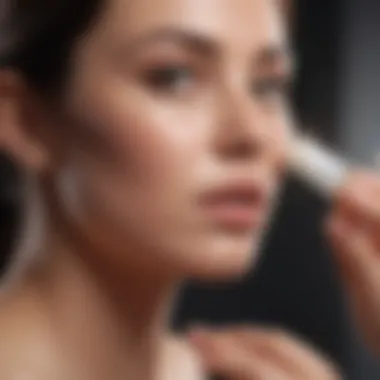
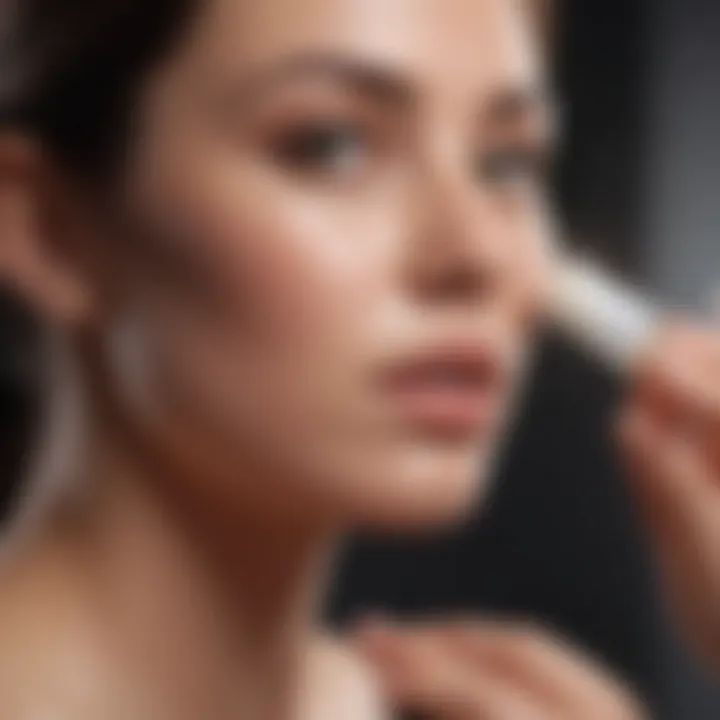
Breathing Techniques
Deep breathing techniques can also provide significant relief during waxing. These exercises encourage relaxation and can minimize the perception of pain.
- How It Works: Breathing in deeply and slowly exhaling creates a calming rhythm that counters anxiety and tension, which can exacerbate the sensation of pain. This practice allows for a full focus on the breath rather than the discomfort.
- Why Consider It: Many practitioners swear by breathing techniques not just for waxing but for various medical procedures. The beauty lies in its simplicity—you don't need any special tools or products, making it accessible to everyone.
- Drawbacks: While breathing exercises can be effective, they may take practice to master. For some, focusing on breathing while feeling the wax may not be enough to divert attention entirely from the pain.
"Pain is inevitable, suffering is optional." — Haruki Murakami
By incorporating one or more of these pain-relief techniques into their waxing process, individuals stand to significantly enhance their experience and mitigate discomfort. Whether through numbing agents, cold therapy, or distraction strategies, the right approach can pave the way for a smoother and ultimately more enjoyable waxing session.
Guidelines During the Waxing Process
When it comes to minimizing discomfort during waxing, the actual process can be just as crucial as preparation and aftercare. Many people may not realize that certain guidelines can greatly influence the comfort level of their waxing experience. By focusing on how you communicate with your aesthetician and adopting the right positions, the overall experience can become more manageable and less stressful. Here are some actionable insights that can empower anyone heading into their waxing appointment.
Communicating with Your Aesthetician
It's no secret that clear communication is key in any service industry, and waxing is no different. Starting with a candid discussion about your pain tolerance, skin sensitivity, and any previous experiences you've had is essential. Don't hesitate to explain your concerns directly. It's a good practice to let your aesthetician know which areas of your body are more sensitive. For instance, many people have different sensitivities ranging from hardly feeling anything at all in their arms to being quite uncomfortable when it comes to their bikini area.
Furthermore, informing your aesthetician about any medications you're taking or skin conditions you have can help them tailor the waxing approach specifically to your needs. This can ensure that they use the right type of wax, and the right technique, mitigating discomfort. It’s also helpful to ask questions: "Is this the least painful method for my skin type?" or "Can we take breaks?"
To sum up, establishing a good rapport with your aesthetician can significantly enhance your experience. They can provide reassurance and adjustments based on your feedback, making the whole process smoother and less of a trial.
Positioning for Comfort
A little-known aspect of making the waxing experience more pleasant is the positioning of your body. It might seem trivial, but how you sit or lay can impact your comfort levels during the procedure. One tip is to ensure that you’re in a position where your muscles feel relaxed rather than tense. For instance, if you’re getting leg waxed, lying back with your legs slightly apart can release tension. On the other hand, curling up can make the process more uncomfortable.
Additionally, using pillows or bolsters for support isn’t just a luxury—it's a tactic that can help ease the discomfort. You might consider placing a small cushion under your knees if you’re having your legs done. This can create a more relaxed posture and offer a bit of relief during the waxing.
Here are a few more points to think about:
- Avoid Clenching: Make a conscious effort to keep your body loose, which can alleviate some of the pain.
- Feet Positioning: They don't need to be rigid; rather, let them fall naturally to the sides.
- Breathing: As cliché as it sounds, breathing deeply can provide an instant sense of calm.
Being mindful of your position can not only help in minimizing discomfort but also foster a more beneficial environment for the waxing process.
Remember, a good waxing experience relies heavily on how you communicate and position your body. Make the most of these guidelines to embrace a smoother waxing journey.
Post-Wax Care Procedures
After enduring the discomfort of waxing, how one tends to the skin afterwards can make a world of difference. Don't underestimate the power of post-wax care; properly caring for your skin can not only alleviate any immediate soreness but also help in preventing any long-lasting effects like irritation or ingrown hairs. The importance of this phase cannot be overstated, as it ensures a smoother journey into the post-waxing world.
Soothing Products to Apply
When it comes to soothing the skin following a waxing session, choosing the right products is key. Here are several options to consider:
- Aloe Vera Gel: Known for its cooling properties, aloe vera can relieve some of the burning sensation that comes after waxing. Plus, it's natural and hydrating, making it suitable for various skin types.
- Calendula Cream: Often overlooked, this cream contains anti-inflammatory properties and can promote healing, making it an excellent post-wax option.
- Arnica Gel: If there’s any bruising or significant redness, arnica gel can help reduce those symptoms quite effectively.
When applying these products, gently massage them into the skin. Avoid rubbing too hard; you don’t want to exacerbate what might already be sensitive skin.
Avoiding Irritants
After waxing, it's essential to play it safe when it comes to your skin care routine. Avoiding irritants is crucial for healing. Here are some points worth keeping in mind:
- Skip Scented Products: Fragrance in lotions and sprays can sting or cause an adverse reaction on freshly waxed skin.
- No Exfoliating: For at least 48 hours post-wax, steer clear of exfoliating scrubs or brushes. The skin is already delicate, and any added scrubbing can lead to irritation.
- Limit Sun Exposure: Avoid tanning and direct sunlight; fresh skin can burn easily. If you must go outside, make sure to apply a broad-spectrum sunscreen to protect against UV damage.
Establishing a Healing Routine
Consistency is key when it comes to post-wax care. Implementing a routine can facilitate quicker healing and keep your skin in tip-top shape. Here are some general guidelines:
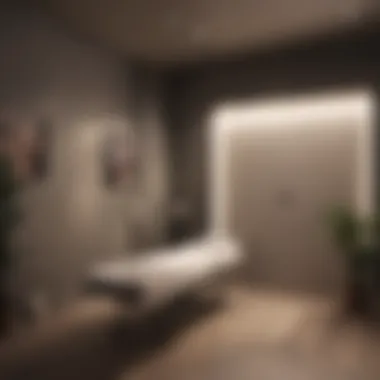

- Hydrate: Drink plenty of water to keep your skin supple from the inside out. This helps your body heal and can minimize redness.
- Moisturize Regularly: Use a gentle, unscented moisturizer every day. Keeping your skin hydrated helps prevent dryness, which can lead to irritation.
- Monitor Skin Reactions: Keep an eye on your skin for any signs of unusual reactions. Redness that lingers or irritation that doesn’t subside could indicate that something isn’t right, and you may need to consult a professional.
- Gentle Cleansing: Opt for a mild cleanser rather than harsh soaps that strip the skin of its natural oils. Clean your skin gently to maintain its natural balance.
By prioritizing these steps in your post-wax care, you stand a better chance of enjoying smoother skin with minimal discomfort after each session. Always remember that your skin’s health is a long game; approach it with care and attention.
Alternative Hair Removal Methods
When considering ways to minimize discomfort while hair removal is in question, it’s essential to explore alternatives beyond traditional waxing. In this section, we’ll delve into two popular options: depilatory creams and laser hair removal. Understanding their unique characteristics, benefits, and considerations will empower you to make an informed choice about which method best suits your needs.
Depilatory Creams
Depilatory creams are a convenient choice for those looking for a quick and relatively painless solution to hair removal. These creams work by using chemical agents to break down the protein structure of hair, allowing it to wipe away easily. Here are some key points to consider with depilatory creams:
- Speed and Ease: Application takes just a few minutes, and results can last longer than shaving.
- No Pulling Sensation: Unlike waxing, which involves pulling hair from the roots, depilatory creams simply dissolve hair, minimizing discomfort.
- Variety of Formulations: Many brands offer options for sensitive skin, helping to reduce the risk of irritation.
"If you’re looking for a pain-free method, depilatory creams can be a game-changer. Just remember to do a patch test first to avoid reactions!"
While these creams provide immediate results, keep in mind they do have their downsides. Some people may experience irritation from the chemicals used. It’s critical to follow instructions carefully, ensuring you do not leave the cream on longer than recommended.
Laser Hair Removal
Laser hair removal is perceived as a more permanent solution and is gaining popularity for its long-lasting results. The technique involves using concentrated light beams to target hair follicles, effectively reducing hair regrowth over time. Here are some considerations to ponder about laser hair removal:
- Long-Term Results: After a series of sessions, many women report a significant reduction in hair growth, with some achieving permanent hair removal.
- Minimal Discomfort: While there might be some initial tingling sensation, it’s often compared to the feeling of a rubber band snapping against the skin.
- Professional Treatment: Usually requires visits to trained professionals or clinics, which means time and financial investment.
- Skin and Hair Types: Efficacy can vary depending on skin and hair color; darker hair on lighter skin tends to respond best to laser treatments.
In summary, laser hair removal can be an effective way to avoid the discomfort potentially associated with waxing if you’re willing to commit to several sessions.
Both depilatory creams and laser hair removal offer viable alternatives for those seeking relief from the discomfort often tied to waxing. Ultimately, the choice should reflect personal preferences, skin sensitivity, and hair growth goals. Integrating these methods into your hair removal routine may just result in a more comfortable experience, freeing you from wax-related woes.
Recognizing When to Seek Professional Help
Waxing is often perceived as a straightforward method for hair removal, yet it can sometimes lead to unforeseen complications. Many individuals dismiss minor irritations, assuming they will fade with time. However, knowing when to consult a professional can save you from a world of hurt—or at least discomfort.
It's essential to recognize that experienced aestheticians have trained for various scenarios that can arise during or after waxing. They have the expertise to identify potential problems and address them efficiently.
Signs of Adverse Reactions
When participating in waxing treatments, keep your eyes peeled for signs that might indicate something is off. Here are some crucial indicators:
- Severe Redness: A slight flush can be normal post-wax; however, if redness persists or intensifies after a few hours, it’s a signal you shouldn't ignore.
- Swelling and Bumps: If you notice raised welts or persistent inflammation, taking a cue from your skin could be wise.
- Itching and Burning Sensation: While some discomfort is part of the process, sustained itching or a burning feeling can suggest an allergic reaction—especially if you’ve used a new product or a different kind of wax.
- Excessive Pain: Waxing shouldn’t feel like an Olympic event. If you experience excruciating sensations that last beyond the procedure itself, it may be time to reach out.
- Unusual Discharge: If your skin starts to leak any unusual fluids, this could be a sign of an infection.
In all honesty, it can be easy to brush off these signs, but your body often knows best. It's better to be safe than sorry—especially when it comes to skin health. Consulting an expert can not only alleviate your concerns but also equip you with the knowledge to prevent future discomfort.
"A little precaution goes a long way in maintaining skin health."
Recognizing when to seek professional help during your waxing journey is paramount. This is not merely a personal grooming decision but one that can impact your overall well-being. By trusting your instincts and noticing these signs, you are on the right path to achieving a safe and effective waxing experience.
Epilogue
The conclusion of this discussion on waxing discomfort brings forth the essential understanding that many techniques can ease the challenges of this popular grooming choice. It’s not simply about enduring pain, but rather navigating the process in a more informed and confident manner. From preparation to aftercare, each element plays a crucial role in how your body reacts during and after the skin treatment.
Recap of Key Strategies
- Pre-Wax Preparation: Engaging in practices like skin hydration, proper exfoliation, and timing of appointments is paramount. The condition of your skin before the waxing touches matters greatly. A well-prepared canvas tends to be less sensitive.
- Pain-Relief Techniques: Implementation of numbing agents, using cold compresses, and engaging in distraction methods can transform the experience. Each of these techniques offers a layer of protection against discomfort, helping to manage pain levels effectively.
- Communication with Professionals: Establishing a rapport with your aesthetician is essential. Make your preferences known, be it about techniques to use or areas of higher sensitivity. This exchange not only enhances comfort but can lead to a more tailored approach.
- Post-Wax Care: The steps taken immediately following the waxing session are equally significant. Application of soothing products and avoiding irritants can greatly diminish the risk of adverse reactions. Letting the skin heal properly can prevent prolonged discomfort.
In essence, when viewed collectively, these strategies create a roadmap towards a more bearable waxing experience. Recognizing the potential pain points and actively addressing them transforms the process from a dreaded obligation into a more comfortable ritual.
Empowering Confidence in Waxing
Understanding the nuances of waxing allows individuals, especially women of various backgrounds, to take command of their grooming choices. Empowerment here lies not only in knowledge but also in the capacity to influence outcomes positively.
Feeling apprehensive about waxing is normal, yet knowing you have tools at your disposal to mitigate discomfort can change your mindset dramatically. This education fosters a sense of control. With plans in steam for managing discomfort, you can walk into your next appointment equipped and ready.
Let’s not forget the community surrounding hair removal; sharing experiences and tips on platforms like Reddit or Facebook can be enlightening. Engaging in such dialogues brings to light countless first-hand accounts that contribute to a nuanced understanding of waxing.
By embracing discomfort-reduction strategies and recognizing the power of informed choice, you embark on a journey of personal care marked by confidence. Take the reins of your grooming routine; through practice and patience, waxing can become just another step in your beauty regimen rather than a source of dread.



